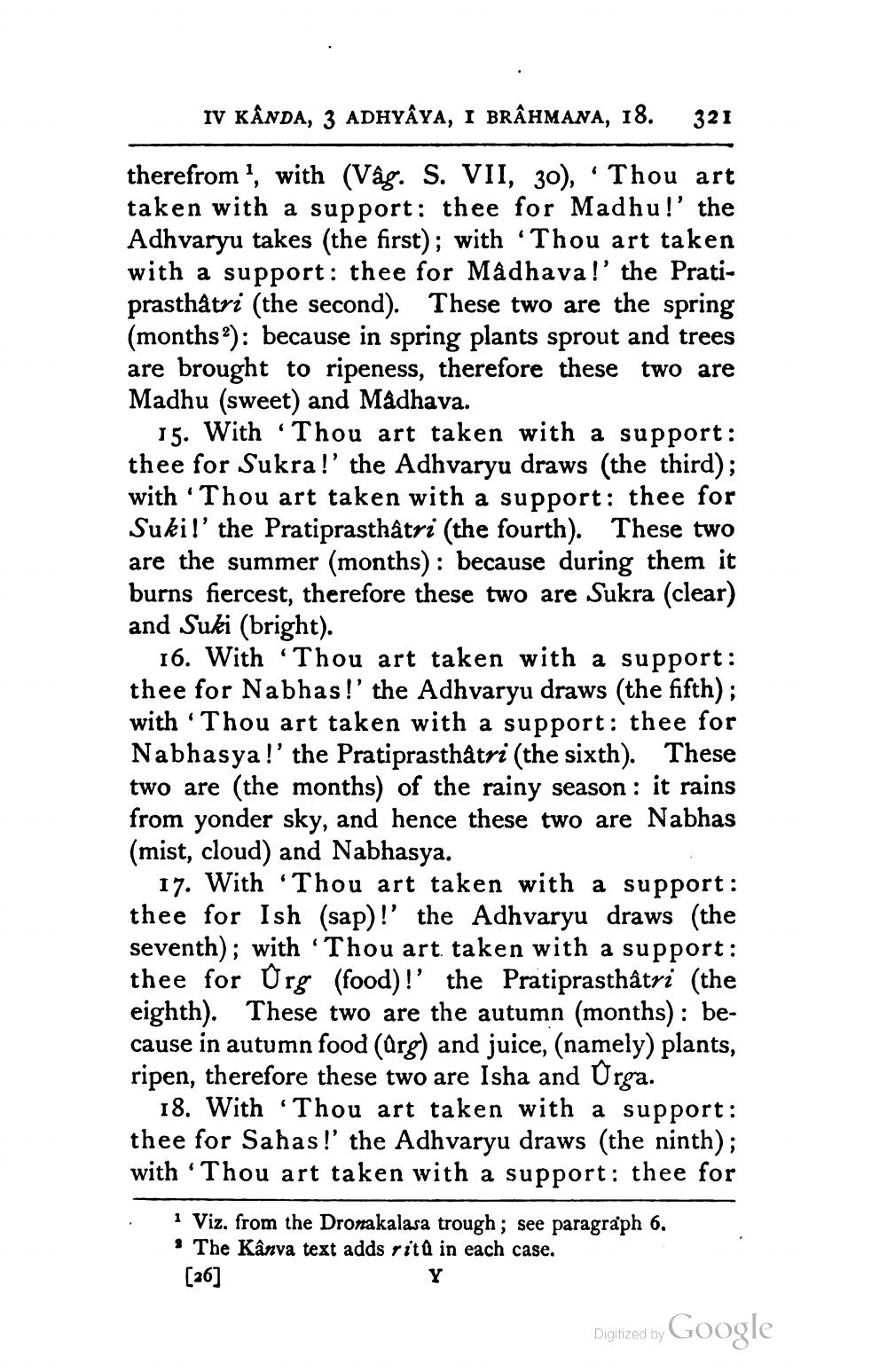________________
IV KÂNDA, 3 ADHYAYA, I BRÂHMANA, 18.
321
therefrom", with (Vâg. S. VII, 30), · Thou art taken with a support: thee for Madhu!' the Adhvaryu takes (the first); with ‘Thou art taken with a support: thee for Madhava!' the Pratiprasthåtri (the second). These two are the spring (months): because in spring plants sprout and trees are brought to ripeness, therefore these two are Madhu (sweet) and Madhava.
15. With 'Thou art taken with a support: thee for Sukra !' the Adhvaryu draws (the third); with “Thou art taken with a support: thee for Sukil' the Pratiprasthầtri (the fourth). These two are the summer (months): because during them it burns fiercest, therefore these two are Sukra (clear) and Suki (bright).
16. With 'Thou art taken with a support: thee for Nabhas!' the Adhvaryu draws (the fifth); with 'Thou art taken with a support: thee for Nabhasya!' the Pratiprasthàtri (the sixth). These two are (the months) of the rainy season: it rains from yonder sky, and hence these two are Nabhas (mist, cloud) and Nabhasya.
17. With 'Thou art taken with a support: thee for Ish (sap)!' the Adhvaryu draws (the seventh); with 'Thou art. taken with a support: thee for Urg (food)!' the Pratiprasthầtri (the eighth). These two are the autumn (months): because in autumn food (urg) and juice, (namely) plants, ripen, therefore these two are Isha and Urga.
18. With ‘Thou art taken with a support: thee for Sahas! the Adhvaryu draws (the ninth); with ‘Thou art taken with a support: thee for
1 Viz, from the Dronakalasa trough; see paragraph 6.
The Kânva text adds rita in each case. [26]
Digitized by Google




